IndiaWilds Newsletter Vol. 14 Issue II
ISSN 2394 – 6946
A Long & Dangerous Journey
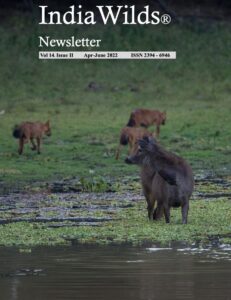 In early part of last century when people realized that unrestrained hunting of wild life species has resulted in extinction of some species and local extermination of some others, the thought of regulating hunting and creating protected areas for wildlife species gained favour. Soon with better protection in the declared reserve forests, sanctuaries and National Parks, populations of some wildlife species started increasing. Till date we follow this model of Protected Area network of reserve forests, conservation reserves, wildlife sanctuaries and National Parks. With massive increase in human population most of the areas that had remained under forest cover as well as areas that were technically revenue land but had remained unused and hence had tree cover got cleared up for housing, schools, hospitals, industries and other uses. The concrete jungle kept increasing and soon the forests became like islands surrounded by various human habitations.
In early part of last century when people realized that unrestrained hunting of wild life species has resulted in extinction of some species and local extermination of some others, the thought of regulating hunting and creating protected areas for wildlife species gained favour. Soon with better protection in the declared reserve forests, sanctuaries and National Parks, populations of some wildlife species started increasing. Till date we follow this model of Protected Area network of reserve forests, conservation reserves, wildlife sanctuaries and National Parks. With massive increase in human population most of the areas that had remained under forest cover as well as areas that were technically revenue land but had remained unused and hence had tree cover got cleared up for housing, schools, hospitals, industries and other uses. The concrete jungle kept increasing and soon the forests became like islands surrounded by various human habitations.
People expect wild animals to remain within the areas that have been declared as forests. They forget that wild animals need to move around in search of food. Humans too need to move around in an indirect way for getting food. We humans need to go to our place of work to earn money for food. Millions of people migrate from their villages to cities in search of work so that they can satiate their hunger. Even though cities don’t grow their own food, there is a transportation system to get food grains from one place to other. Animal societies don’t have a transportation system to get food from one city to another. If they need food, they have to move from one forest to another.

Some wildlife species have their requirements met within a patch of a forest. However, most others need to wander from one forest to another in search of food and mate. Historically, naturalists and wildlife biologists knew about these animal movements. However, it was difficult to know how far different species travel. In one eye opening study by the Zambian Carnivore Program, an African wild dog Lycaon pictus, code named EWD 1355 was radio collared by Scott Creel of Montana State University. This 3 year old female wild dog along with 2 other female siblings broke free from the main group and travelled a humongous 1300 miles between October 2021 to June 2022. They moved from Luangwa Valley in Eastern Zambia and covered 3 countries, crossed dangerous roads, human habitations, croc infested rivers without getting killed by any other wildlife species, humans or machines. Swimming across 300-foot-wide swollen Luangwa river without getting caught by crocodiles is no mean feat. Their 1300-mile journey was more than twice the previous record. Scientists found that when these three wild dogs found scent of human habitations, they either avoided or ran through the area to quickly move away. This shows that wild dogs know how bad humans are. Unfortunately, a child may feel ashamed. However, we adults simply don’t care what others feel about us.
In India during the sudden lockdown in the initial phase of Covid_19 pandemic in 2020, many people walked or pedaled on their bicycle for thousands of kilometers to reach their native place so that they could escape starvation. This epic journey of the three African wild dogs tells us that we may be a different living species, however it is tough to resist the pangs of hunger and dream to lead a better life.
The wild dogs have an interesting social hierarchy. Only the leading female of the pack has the right to mate. Others remain in subordinate roles and help in hunting as well as rearing up the pups. Unless wild dogs break away from their pack to start a pack of their own, they can’t have the independence to procreate. When the three wild dog females broke free from their pack, they had to skirt carefully around other large wild dog packs so that they don’t need to fight with them. Of course, in other packs if there are subordinate bachelor wild dogs willing to break free and start a life of their own, then the process becomes easier. If the three female wild dogs are not able to attract such males from other packs then they won’t be able to procreate. And the pack size too remains small so that they can’t effectively hunt and pull-down large prey. Safety is also in numbers. Other predators may not immediately engage with a large pack.
When these wild dogs are on the move a slight mistake in crossing a busy road would result in an accident and injury or death. These days the speeds of automobiles are all more than 100kmph. The sound of the automobile, vibrations along with the high speed makes it difficult for wildlife species to accurately judge when to run and cross the road. Death or injury to one of the members seriously undermines the ability of a small pack to hunt. And the emotional blow of seeing a relative crushed to death is high, even though it currently remains unquantified by science. This epic journey shows us the massive risks that wildlife species take solely to move in a fragmented landscape and survive.
Wildlife were able to thrive till the hand of man completely destroyed and changed the landscape. The prey species were decimated by poaching, land use change and anthropogenic pressures ensured that there is less food available for the herbivores. If the number of herbivores go down, there is a direct impact on the carnivores that prey on them. Since man is the cause of misery to the wildlife species, it is a moral imperative that secure wildlife corridors are recreated to connect various wilderness areas. This would ensure wildlife species can safely disperse from one forest to another. Young carnivores can find a suitable space and establish their own territory. Even herbivores would move from one forest to another. This would lead to increased genetic diversity. There would be no more ill effects of inbreeding due to wild animals forced to remain within one forest area.
The current roads that cut across forests should be closed and alternate alignments skirting the forests be created. This will help reduce the noise pollution as well as ensure that the wild animals are able to move freely within their habitat. The wildlife kills due to accidents will be stopped. Many smaller mammals and herpetofauna will be able to now move to the other side of the road without being killed and this will help increase the genetic diversity.
Some people want flyovers to be created on the existing roads if alternate alignments cannot be created. If the entire stretch of the road be converted into flyover so that vehicles only ply on the flyover and not on the ground below then wildlife road kills will come down. This will ensure that our vehicles can drive much above the forests instead of fragmenting exiting wildlife habitat. Today we have the technology to construct flyovers using prefabricated components in much less time. However, it should be noted that flyovers will cause disturbance during the construction phase. Also, there will be sound pollution due to the vehicles. Ideally no roads or flyovers should pass through core forests. Also, vehicles plying on the night should definitely be stopped in critical forest areas to avoid disturbance. Nevertheless, the best solution is to simply skirt the existing forests and create alternate roads. In case of smaller wildlife corridors create flyovers so that the wildlife can safely pass without falling victim to speeding vehicles.
In India, wild animals are a part of our cultural ethos. They are worshipped as vehicle of our deities. If we recreate safe wildlife corridors between various wildlife sanctuaries, national parks and reserve forests then we too can proudly talk about stories of Wild dogs, leopards, tigers, elephants and other wildlife travelling thousands of kilometers without fear of being killed.
Article:
Comments on recent record of Indian Roofed Turtle from Freshwater Inland Wetland, Gujarat, India
by Raju Vyas
Ladakh : An Enchanting Landscape
By Shakti & AS Bishnoi
Conservation News:
Fourth batch of ‘Bird Identification and Basic Ornithology’ course completed
16th June, 2022
Ministry of Environment, Forest & Climate Change (MoEF&CC), in line with the Skill India Mission of the Prime Minister, has taken forward the initiative for skill development in the environment and forest sector to enable India’s youth to get gainful employment under the Green Skill Development Programme (GSDP). The programme endeavors to develop green skilled workers having technical knowledge and commitment to sustainable development for the attainment of the Nationally Determined Contributions (NDCs), Sustainable Development Goals (SDGs), National Biodiversity Targets (NBTs), as well as Waste Management Rules (2016).
In the current financial year, i.e. 2022-2023, WWF ENVIS RP has conducted four batches of the GSDP Certificate Course in “Bird Identification and Basic Ornithology”. The course gave an opportunity to students from across the country to gain an exposure about various aspects of ornithology. 30% of the students who attended the courses have been already placed in relevant sectors. The course is free of cost and fully funded by MoEF&CC.
India and Sweden Host Industry Transition Dialogue in Stockholm
1st June 2022
India and Sweden hosted the Industry Transition Dialogue on 1st June in Stockholm, as a part of their joint initiative i.e. Leadership for Industry Transition (LeadIT). The LeadIT initiative lays specific focus on hard to abate sectors that are key stakeholders in the global climate action and require specific interventions.
This high level of dialogue has contributed to the UN Conference ‘Stockholm+50’: a healthy planet for the prosperity of all –our responsibility, our opportunity’, taking place on 2 and 3 June 2022 and set the agenda for COP27.
The event was opened by address from Union Minister of Environment, Forest and Climate Change, India, Shri Bhupender Yadav and Minister for Climate and the Environment, Sweden, Ms. Annika Strandhäll.

In the opening address the Union Minister congratulated the world for the upcoming 50th anniversary of United Nations Conference on the Human Environment that took place in 1972 and put environmental issues at the forefront of the international concerns. He emphasized that it is the time to celebrate 50 years of collaborative action, at the same time to introspect on what has been achieved and what more is yet to be done. “The developing world needs not just an industrial ‘transition’, but an industrial renaissance – a flowering of industries that will create jobs and prosperity along with a clean environment. The developed nations, with their historical experiences, must take lead in the global transition towards net-zero & low carbon industry.”, the minister stated.
Japan and South Africa, the latest members of the initiative were welcomed. This extends the total membership of LeadIT to 37 including countries and companies together. The minister also updated the audience about the progress made under the initiative that includes the sectoral road mapping, workshops and industrial field visits to facilitate knowledge sharing and combined efforts.
During the event, India chaired the roundtable dialogues on Priorities for implementation 2022-23. The need for speed and scale in climate action was echoed by all the speakers. The countries and companies shared their initiatives, success stories and plans for future. Some very specific and valuable insights were shared by the participants. It was felt that the domestic actions if implemented and communicated well can be valuable inspiration at the international level. The efforts and exchanges through such platforms have the potential to lead the world in right direction. The commitments and pledges now must translate into action in mitigation and adaptation that rides on climate finance and technology transfer.
Statement Made by India on Thematic Issues, Migration, Gender, Sand and Dust Storm at Cop15 UNCCD
14th May, 2022
Following is the statement made by India on thematic issues-Migration, Gender, Sand and Dust storms at the 15th Session of the Conference of Parties of United Nations Convention to Combat Desertification (UNCCD) in Cote d’Ivoire, today:
Migration
Desertification, land degradation and drought (DLDD) act as one of the drivers that cause migration. Other factors include climate and environmental changes. Promotion of sustainable agriculture and its associated value chains offer promising avenues to stop out-migration of rural population. Linking urban-rural communities and developmental actions to addresses migration was insisted in decision 22/COP.14. ICCD/COP(15)/18 concludes that in rural areas affected by DLDD, livelihood opportunities through land restoration activities should be ensured. Integrated land-use planning together with enhancing green and blue infrastructure for sustainable development should be prioritised. A stronger symbiotic urban-rural linkage targeting vulnerable groups that include women, rural youth, refugees, and internally displaced person be provided with on-farm and off-farm employment. Youth are most likely to face migration and engaging youth is vital to restoration efforts for resilient and sustainable food systems. Office of the Registrar General & Census Commissioner under Ministry of Home Affairs is the designated authority in India that compiles information on migration based on the data compiled during national census that usually takes place at a gap of ten years’ time interval.
Reducing the extent of human migration is one of the pronounced achievements of watershed development programmes being implemented by Department of Land Resources, Ministry of Rural Development, Govt. of India. About 60% of the amount spent in each watershed goes for labour component which generates substantial employment for the local landless, small and marginal farming community people. Use of machinery in watershed activities is kept to the minimum so that employment opportunities are kept intact which minimize human migration from the watershed project areas. Convergence with MGNREGS and other related schemes is an added advantage for watershed programmes to generate employment and minimize migration.
Watershed Development Component – Pradhan Mantri Krishi Sinchai Yojana (WDC-PMKSY) has generated more than 37.73 Million man-days of employment which also contributed to the reduction in migration in the treated areas, especially, during pandemic period. It has further acted as an enabler of reverse migration, when labour force was reverted to their native places and engaged with the watershed workforce.
Gender
The principle of gender equality is enshrined in the Indian Constitution in its Preamble, Fundamental Rights, Fundamental Duties and Directive Principles. The Constitution not only grants equality to women, but also empowers the State to adopt measures of positive discrimination in favour of women. Within the framework of a democratic polity, our laws, development policies, Plans and programmes have aimed at women’s advancement in different spheres. From the Fifth Five Year Plan (1974-78) onwards has been a marked shift in the approach to women’s issues from welfare to development. In recent years, the empowerment of women has been recognized as the central issue in determining the status of women. The National Commission for Women was set up by an Act of Parliament in 1990 to safeguard the rights and legal entitlements of women. The 73rd and 74th Amendments (1993) to the Constitution of India have provided for reservation of seats in the local bodies of Panchayats and Municipalities for women, laying a strong foundation for their participation in decision making at the local levels.
The goal of National Policy for the Empowerment of Women, 2001 is to bring about the advancement, development and empowerment of women.
Empowerment of women is an integral part of PMKSY in India. Representation of women has been envisioned in the Watershed Committees involved in planning, implementation and maintenance of watershed interventions. Women-based community organizations such as Self-Help Groups, User Groups and farmer producer organizations are formed and nurtured while implementing the watershed programs.
The issues pertaining to gender in India is addressed by two ministries, namely, Ministry of Women and Child Development, and Ministry of Health and Family Welfare. Gender equality is also a major sustainable development goal (SDG 5). In this context, India had proposed its National Action Plan to improve statistics on gender.
The SDG-5 and the basic premise for considering gender as a thematic area is directed towards phasing out gender discrimination from all sectors. The Government of India has taken steps to address this issue at the most fundamental level through the “Beti Bachao, Beti Padhao”. The scheme allows a girl child to be self-sustainable with regard to her own education. To increase participation of women in scientific innovation, the Gender Advancement for Transforming Institutions (GATI) programme has been initiated by the Department of Science Technology, Government of India.
Decision 12/COP.14 emphasized on raising awareness amongst women with regard to land degradation. With respect to this, the Indian Council of Agricultural Research (ICAR) has been conducting knowledge exchange programs with women farmers residing in drought-prone areas. However, as far as SDG-5 is concerned, there is scope for ample progress to be made especially in the areas of women participation in labour.
Sand and Dust storms
Sand and dust storms (in short SDS) are of common occurrence in arid and semi-arid regions both in Asia and Africa and affects 11 of the 17 SDGs. SDS adversely impact environment and quality of life. India highly appreciates that United Nations Economic and Social Commission for Asia and the Pacific (ESCAP) is supporting regional cooperation for issues related to SDS.
Decision 25/COP(14) requested UNCCD to finalise and publish Sand and Dust Storms Compendium to provide information and guidance on assessing and addressing the risks related to SDS.
India acknowledges and fully supports that the UNCCD secretariat has been assisting countries in regional planning and policy framework on combating SDS. Several pilot projects were implemented in central and northeast Asia including China, Korea and Russia to formulate national SDS plans.
In India, work on monitoring of SDS is primarily done by the Indian Meteorological Department (IMD).
ICCD/COP(15)/16, para 23 highlights about major gaps in monitoring, risk assessment, impact assessment and emergency response measures while addressing issues related to the SDS.
Anthropogenic SDS source mitigation is lacking in most of the countries and there is a lack of required data and information to address SDS related issues.
Capacity building of parties to address SDS through SDS toolbox and decision support system was envisaged. The first SDS Toolbox will be made available by mid-2022. Usually, these Toolbox provide methodology to integrate available information in a scientific way to address envisaged problems at a coarser scale.
India can designate appropriate remote sensing agency (such as SAC/ NRSC) to develop GIS layers at finer scale to integrate indicator layers to test its applicability on ground for further improvement. This would address the issues in a more pragmatic way.
Environment Minister addresses UNCCD Conference of Parties at its fifteenth session in Cote d’Ivoire
10th May, 2022
Stating that taking care of the land that sustains us can help the fight against global warming, the Union Minister for Environment, Forest and Climate Chnage,Shri Bhupender Yadav, today pitched for promoting lifestyles for environment. The Union Minister was addressing the opening plenary of the United Nations Convention to Combat Desertification (UNCCD) Conference of Parties at its fifteenth session in Cote d’Ivoire.
Noting strongly that despite the declining condition of land, the World continues to go on with consumerism driven lifestyles and still expect our lands to keep giving, Shri Yadav said “It is imperative that we collectively move away from a consumption-oriented approach. The mindset of use and throw is deleterious for the planet”.
Speaking on the effect of Global warming on land Shri Yadav stated that protecting both people and the planet will not be possible without the developed countries taking the lead in drastic emissions reduction, as their responsibility for global warming is the highest both historically and in the present.
Speaking on the effects of the COVID pandemic, the Indian Environment Minister stated that it has compounded the challenge of fighting global warming as economic pressures have delayed or slowed climate action across the world, but at the same pointed out the finding of the IPCC Report of the Third Working Group, about the world exhausting its remaining carbon budget at a rapid pace, pushing us closer to the temperature limits of the Paris Agreement.
Speaking on India’s presidency of the COP since 2019, Shri Yadav informed that during the COP Presidency under the visionary leadership of Hon’ble Prime Minister Shri Narendra Modi, India has made significant progress in its commitment to restore 26 million hectares of degraded land by 2030, stating that major initiatives have been launched and existing programmes strengthened in meeting our Land Degradation Neutrality targets.
The Minister further stated that India has enhanced monitoring the health of its soils through the Soil Health Card Programme implemented throughout the country. “Over 229 million Soil Health Cards have been issued to farmers between 2015 and 2019 and this program has led to a decline of 8-10% in the use of chemical fertilizers and also raised productivity by 5-6%.”, said Shri Yadav
Further informing about the significant actions done under India’s presidency, Shri Yadav said that following the global call for the submission of nominations for World Restoration Flagships, the Government of India endorsed six restoration flagships that target the restoration of 12.5 million hectares of degraded lands.
“I would like to point out that India’s rural livelihood programmes have an underlying ethos of natural resource conservation and restoration. In recovering from the pandemic, we have used our livelihood programmes extensively to work towards land restoration. Building forward better and greener communities, especially for vulnerable groups, will have to be at the heart of the restoration agenda.”, stated the current COP president
Emphasizing that landscape restoration is more than planting trees, Shri Yadav said that it becomes essential that we recognize the power of local and indigenous knowledge with the close assistance of science and technology and must integrate community needs, priorities and expertise in all parts of the process.
Concluding the statement, Shri Yadav expressed hope that the collective commitments are transformed into action by all countries, and public, private and civil society actors, significantly increasing resources to address the global challenge of containing land degradation, and assured India’s continued support and readiness to contribute to the positive outcome of this conference.
The fifteenth session of the Conference of the Parties (COP15) of the United Nations Convention to Combat Desertification (UNCCD) at Abidjan, Côte d’Ivoire, from 9 to 20 May 2022, will bring together leaders from governments, the private sector, civil society and other key stakeholders from around the world to drive progress in the future sustainable management of land and will explore links between land and other key sustainability issues.
These issues will be discussed during the high-level segment, including a Heads of States Summit, high-level roundtables and interactive dialogue sessions, as well as numerous other special and side events.
Drought, land restoration, and related enablers such as land rights, gender equality and youth empowerment are among the top items on the Conference agenda. Through its decisions adopted by UNCCD’s 197 Parties, COP15 is expected to galvanize sustainable solutions for land restoration and drought resilience, with a strong focus on future-proofing land use.
Joint Declaration of Intent on Forest Landscape Restoration between India and Germany signed virtually
2nd May, 2022
The Joint Declaration of Intent (JDI) on Forest Landscape Restoration between India and Germany was signed virtually between Union Minister of Environment, Forest and Climate Change, Shri Bhupender Yadav and Her Excellency Ms. Steffi Lemke, Minister for Environment, Nature Conservation, Nuclear Safety and Consumer Protection of the Federal Republic of Germany today. It is one of the deliverables of the 6th India-Germany Inter-Governmental Consultations (IGC).
During the event, Shri Bhupender Yadav stated that this JDI will provide the platform to further advance our partnership and support in areas like conservation and restoration, climate protection and conservation of biodiversity. This will also take our partnership to another significant step forward.
Shri Yadav further stated this Joint Declaration of Intent on Forest Landscape Restoration will also help in strengthening Indo-German Cooperation under the dynamic guidance of our Leaders.
The Union Environment Minister mentioned that the JDI will also enable us to successfully partner with each other and expand our bilateral cooperation in the areas of forest landscape restoration, environment and climate change.
Both countries looked forward to successful implementation of the JDI.
Bio-Decomposer Technology for Stubble Burning
7th April, 2022
The bio-decomposer namely Pusa Decomposer developed by The Indian Council of Agricultural Research (ICAR) has been used by the States of Punjab, Haryana, Uttar Pradesh and NCT of Delhi to total of 978,713 acres (3,91,485 ha) equivalent to about 2.4 million tonnes of straw management in this year.
Also, to support the efforts of the Governments of Punjab, Haryana, Uttar Pradesh and NCT of Delhi to address air pollution and to subsidize machinery required for management of crop residue (Cropping System Model-CSM), a Central Sector Scheme on ‘Promotion of Agricultural Mechanization for In-Situ Management of Crop Residue in the States of Punjab, Haryana, Uttar Pradesh and NCT of Delhi’ is implemented from 2018-19. Under this scheme financial assistance @ 50% of the cost of machinery is provided to the farmers for purchase of identified crop residue management machinery and financial assistance @ 80% of the project cost is provided to the Cooperative Societies of Farmers, Farmers Producers Organization (FPOs), Registered Farmers Societies and Panchayats for establishment of Custom Hiring Centres (CHCs) of identified crop residue management machinery.
The satellite-based monitoring indicated that a total 82533 paddy residue burning events were detected in Punjab, Haryana and Uttar Pradesh in 2021 season which are 7.71% less than in 2020.As per the monitoring report, paddy residue events in Haryana increased from 4,202 in 2020 to 6,987 in 2021, while in Punjab events decreased from 83,002 in 2020 to 71,304 in 2021. Similarly, the satellite estimated paddy burnt area in Haryana increased from 216,000 ha in 2020 to 354,000 ha in 2021, while in Punjab the paddy burnt area decreased from 1.66 Million ha in 2020 to 1.59 Million ha in 2021.
During the period from 2018-19 to 2021-22, a total of more than 2.13 lakh crop residue management machines have been supplied to these established CHCs and to the individual farmers in these 4 States (Punjab- 85386 Nos., Haryana- 72237 Nos., Uttar Pradesh – 55711 Nos. and NCT of Delhi – 202 Nos) which also include more than 1889 balers (Punjab -264 Nos., Haryana -973 Nos. and Uttar Pradesh – 652 Nos.)
This information was given by the Minister of State for Environment, Forest & Climate Change, Shri Ashwini Kumar Choubey in a written reply in Rajya Sabha on 7th April 2022.
Rules to Contain Environmental Damage Due to E-Waste Generation
7th April, 2022
The percentage of e-waste collected, dismantled & recycled/ disposed out of the total e-waste generated in the country from twenty-one (21) types of electrical and electronic equipment (EEE) notified Under the E-Waste (Management) Rules, 2016 during the last three years is given below:
| Financial Year | Generation
|
Quantity of e-waste collected, dismantled & recycled / disposed |
| (Tonnes) | (Tonnes) | |
| 2017-18 | 7,08,445.00 | 69,414.0 |
| 2018-19 | 7,71,215.00 | 1,64,663.0 |
| 2019-20 | 10,14,961.21 | 2,24,041.0 |
The input data of e-waste generated is collated on national level only.
Ministry has notified E-Waste (Management) Rules, 2016 which were further amended in 2018for management of electronic waste generated due to discarding of electronic equipment by the consumers. The rules came into force since 1st October, 2016and have the following specific objectives:
- Extended Responsibility to producers to manage a system of E-waste collection, storage, transportation and environmentally sound dismantling and recycling through EPR Authorization (EPRA).
- To promote and encourage establishment of an efficient e-waste collection mechanism.
- To promote environmentally safe and sound recycling through authorized dismantlers and recyclers of e-waste.
- To minimize illegal recycling / recovery operations.
- Reduce hazardous substances in Electrical and Electronic Equipment (EEE).
The EEE after their useful life when they become e-waste, may not cause any harm to health and environment if it is stored safely. However, if un-scientific and crude methods are used for processing for retrieval of useful components or material or if the material is disposed in open, then it may cause health risks and damage to environment. Under the E-Waste (Management) Rules, 2016, collection and processing of e-waste can be carried out only by Producers or their authorised associates/ partners, authorised dismantlers, recyclers and authorised refurbisher. Non-compliance of the E-Waste (Management) Rules, 2016 may lead to adverse impact on environment and human health. Following steps have been taken to curb informal collection and unscientific dismantling and recycling of e-waste:
- Under EPRA, a producer is required to get its e-waste managed only through an authorized dismantler or recycler of e-waste.
- Central Pollution Control Board (CPCB) grants EPRA only to those producers who have set up a system of collection of e-waste through authorised entity as per the above said rules.
- An Action Plan for enforcement of E-Waste (Management) Rules, 2016, across the country is in place since May, 2019. The action plan is to be implemented by all the States/UTs and State Pollution Control Boards (SPCBs)/Pollution Control Committees (PCCs) are required to submit their quarterly progress reports to CPCB to review progress. In the said action plan, checking informal traders, dismantlers, recyclers of e-waste have been taken-up as one of the action points. Drives for identification of informal activities are to be done by all the SPCBs along with district administration of the State. An e-waste management review portal has also been developed for uploading status & progress of e-waste action plan.
- Actions, such as, constitution of teams for carrying out drives, issuing of notices, closure of operation, seizing the E-Waste against the informal processing are being taken up by the SPCBs/PCCs. Seventeen SPCBs/ PCCs started the drive against informal recycling as per the aforesaid Action Plan during Financial Year 2020-2021.
- Under the aforesaid rules, provisions have been made for recognition and registering of workers involved in dismantling and recycling of E-Waste. Under Rule 12(1) of the said rules, State Government has been entrusted with the responsibility to ensure earmarking or allocation of industrial space or shed for E-Waste dismantling and recycling in the existing and upcoming industrial park, estate and industrial clusters.
This information was given by the Minister of State for Environment, Forest & Climate Change, Shri Ashwini Kumar Choubey in a written reply in Rajya Sabha on 7th April, 2022.
Equipment Discussions:
Canon announces EOS R7 and EOS R10 APSC sensor cameras
Blackmagic Design announces Pocket 6K G2 cinema camera
Natural History
COUNTRY NOTEBOOK: M. Krishnan: ‘Google Eyes‘ shared By Saktipada Panigrahi
https://www.indiawilds.com/forums/showthread.php?8852-Country-notebook-m-krishnan&p=60840#post60840
TEDx Talk: Learning from India’s Wilds
A recent TEDx talk by Sabyasachi Patra explores the strategies wildlife use in their life and death battles. These learnings can help we humans in improving our lives.
Photography Tips – Learning Exposure
To make photography learning easier, we are creating a photography tutorial video series. The first part of photography tips is on learning exposure. Check it out in this link: https://youtu.be/PT3vvNIJx1g
Wildlife Photography
Barking deer via camera trap by Vipin Sharma
https://www.indiawilds.com/forums/showthread.php?20253-Barking-deer
Gaur and the Tiger by Shyamala Kumar
https://www.indiawilds.com/forums/showthread.php?20215-The-Other-Matriarch-and-the-tiger
Wild Boar in Corbett by VS Shankar
https://www.indiawilds.com/forums/showthread.php?20275-Wild-Boar-Jim-Corbett!
Savanna Nightjar by Vineet Shrivastava
https://www.indiawilds.com/forums/showthread.php?20201-Savanna-Nightjar
Great Pied Hornbill by VS Shankar
https://www.indiawilds.com/forums/showthread.php?20207-Great-Hornbill-Jim-Corbett!
Orange Headed Thrush female by Samrat Sarkar
https://www.indiawilds.com/forums/showthread.php?20230-Orange-headed-Thrush-(Female)
White capped water redstart by Vipin Sharma
https://www.indiawilds.com/forums/showthread.php?20222-White-Capped-Water-Redstar-Corbet
Mating of Himalayan Toad by Samrat Sarkar
https://www.indiawilds.com/forums/showthread.php?20265
Lobster Moth Caterpillar by Prajwal Ullal
https://www.indiawilds.com/forums/showthread.php?20289
The pride of the city by Prajwal Ullal
https://www.indiawilds.com/forums/showthread.php?20249
Spare a Thought
Touche.
I look forward to your inputs and support in preserving the last tracts of wilderness and wildlife left in our beautiful country and raising awareness about it. For other interesting articles and images check –
http://www.indi
To post in the IndiaWilds forums, you can register free of cost using your Full Name as user id at:
http://www.indiawilds.com/forums/register.php
If you are already a member of IndiaWilds and have forgotten your user id and/or password you can mail to:
administrator@indiawilds.com
Regards,
Sabyasachi Patra
Profile | Contact Us | Facebook | Diary | Equipment reviews | Forums | IndiaWilds You Tube Channel
Please post your views and feedback in the comments below.
- Endangered Wild Buffalo of Kaziranga - 4 July,2024
- Leopards: The Last Stand Trailer 2 - 1 July,2024
- GoPro Hero 12 Black - 6 September,2023

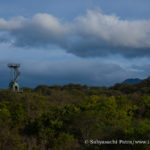


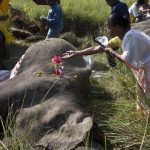

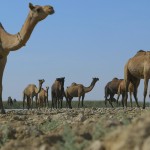
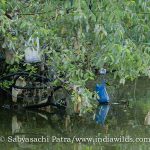



Leave a Reply